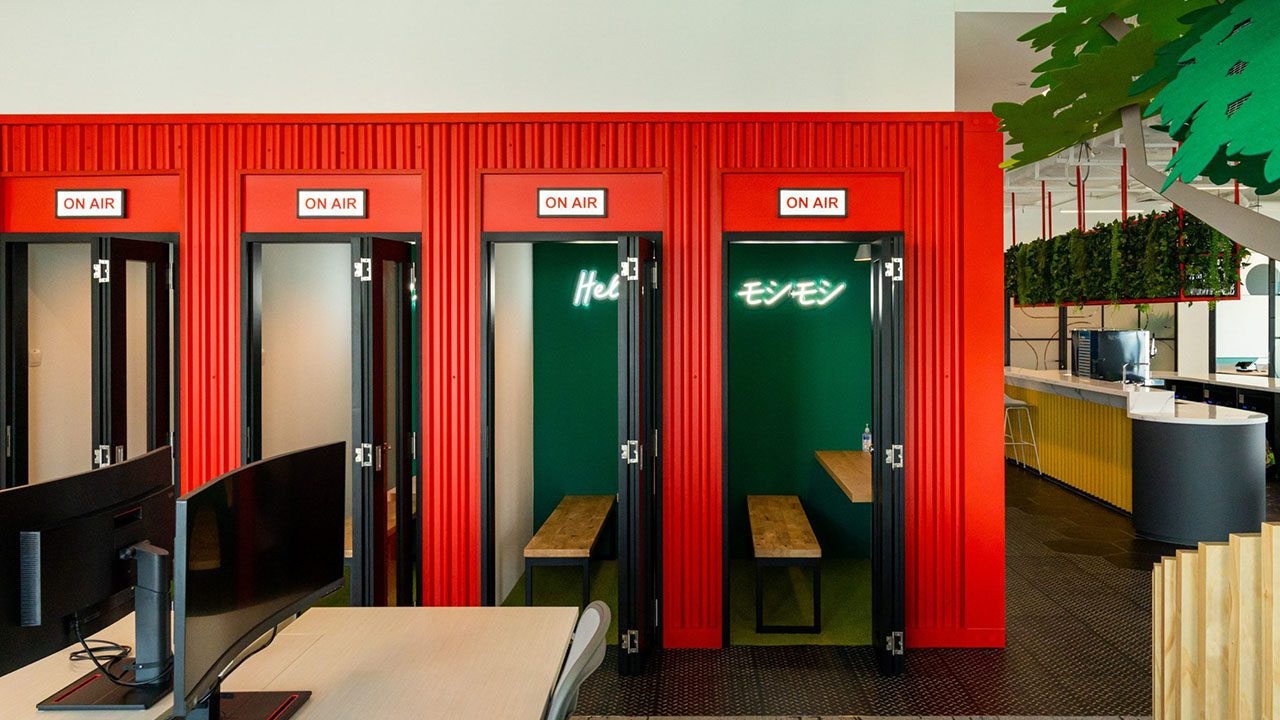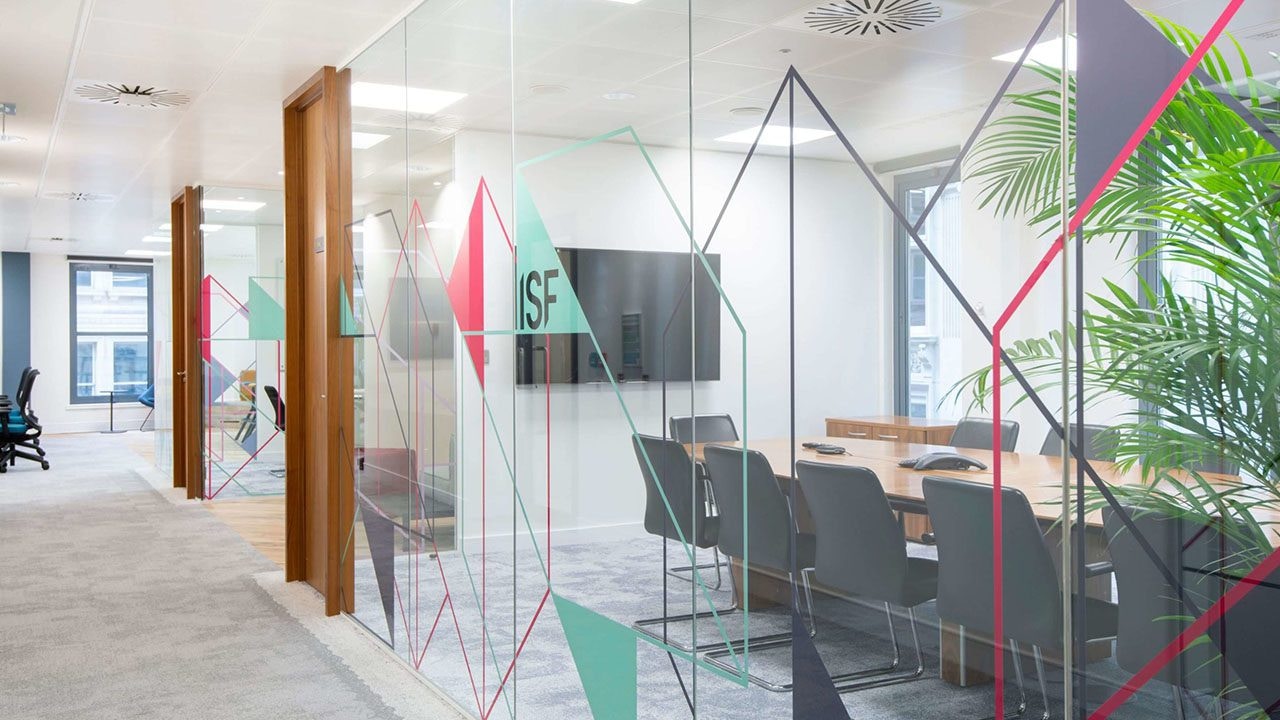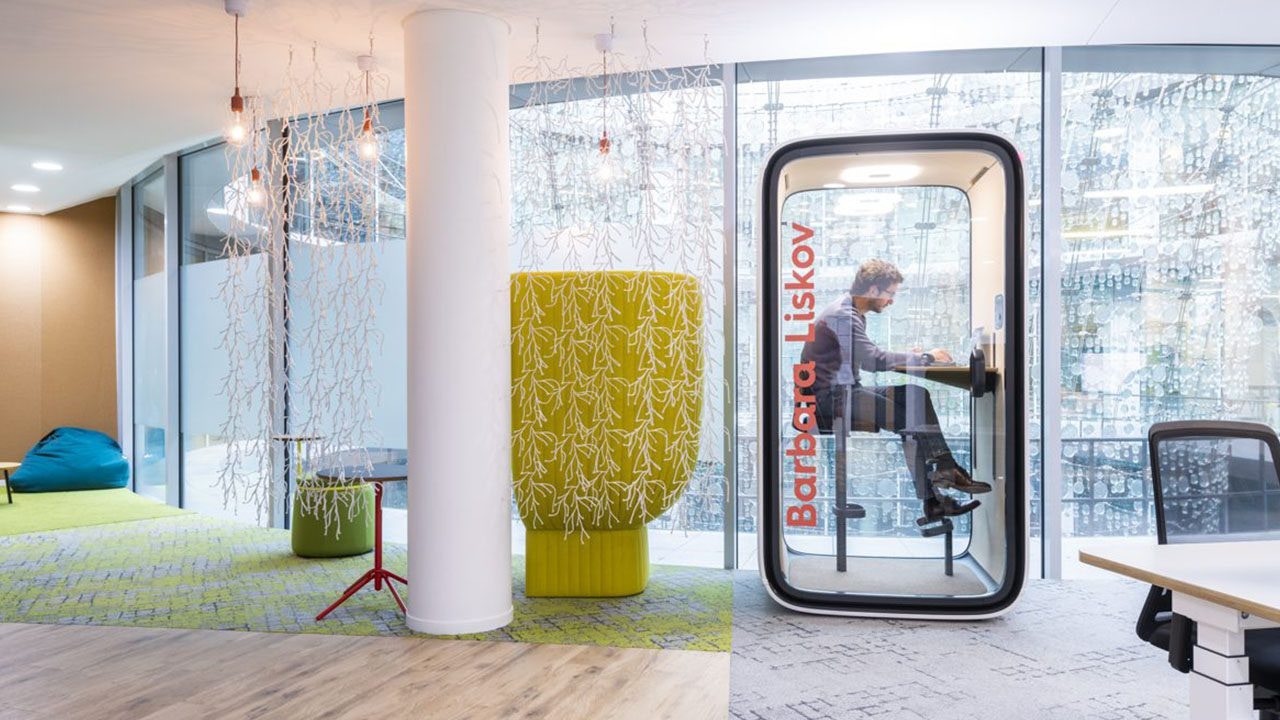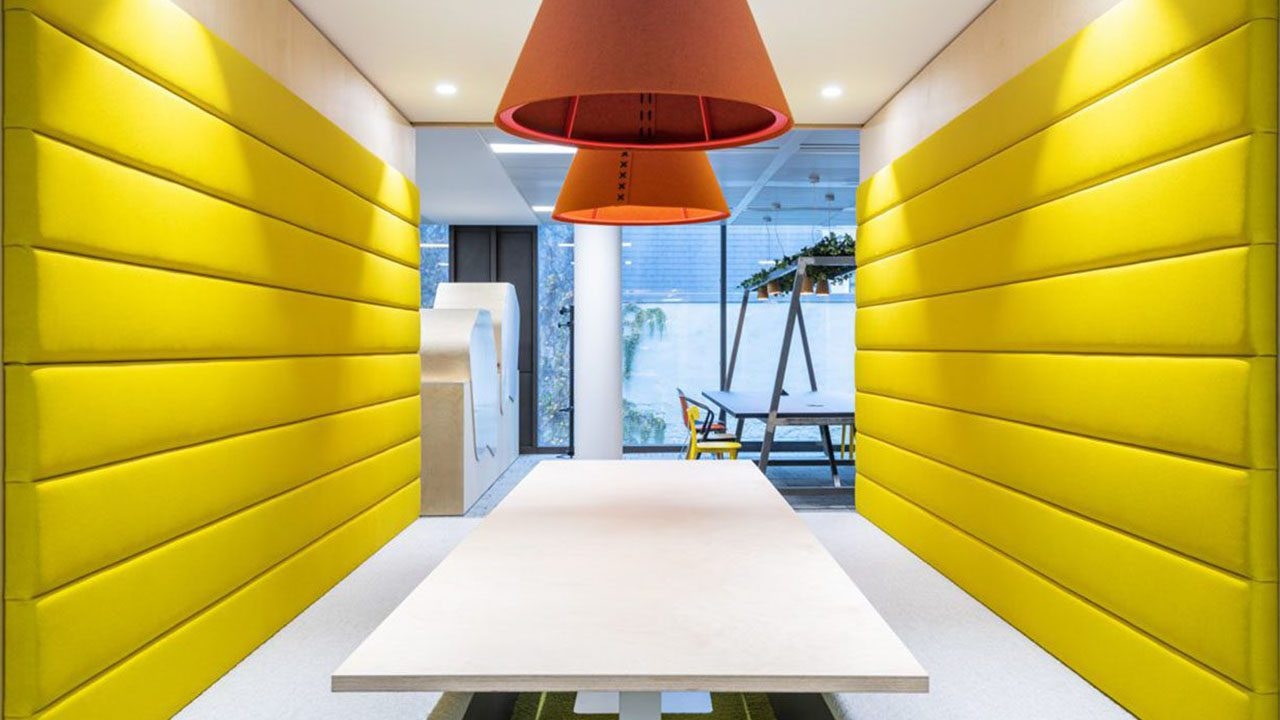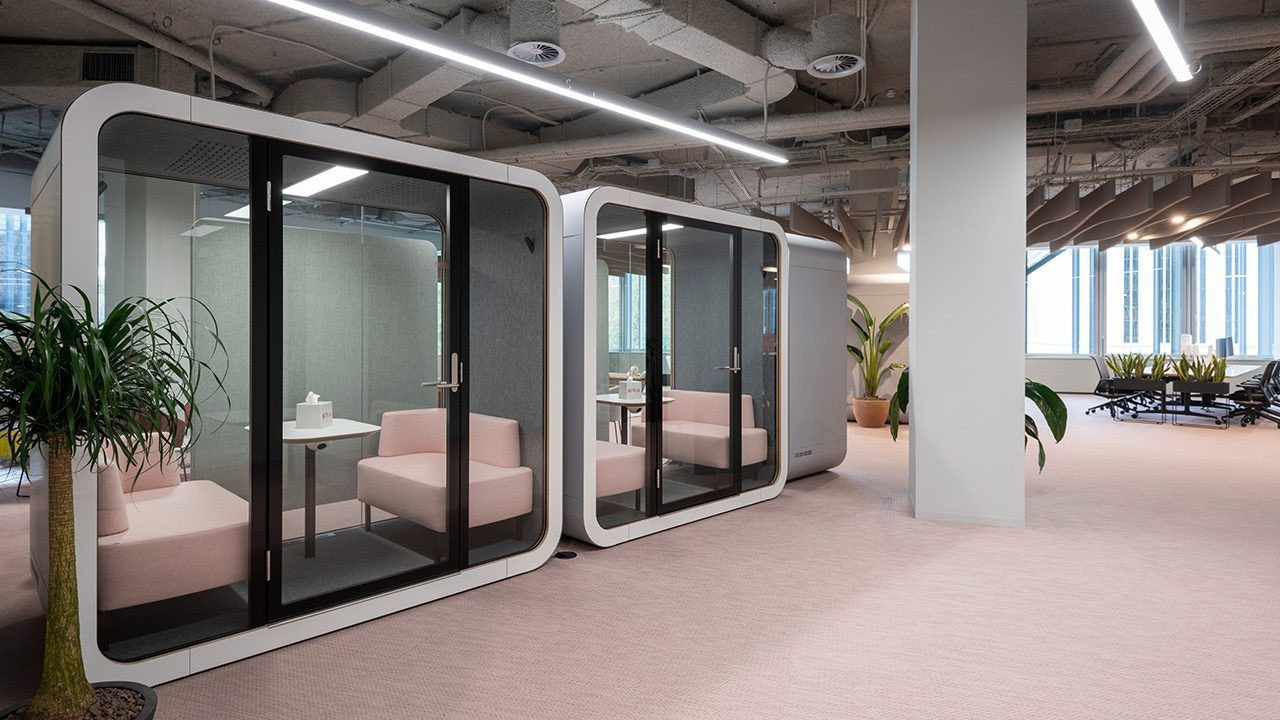How do you Reduce Office Noise Levels?
Minimising noise in the workplace is essential for improving productivity and employee well-being. Open-plan offices, in particular, often suffer from high noise levels due to the lack of physical barriers. Research shows that 52% of employees experience noise distractions more than five times daily. Our acoustic design strategies include using sound-absorbing materials, improving insulation, and applying diffusion techniques to scatter sound. We also provide bespoke solutions such as acoustic pods, modular workstations, acoustic panels, and soundproofing for meeting rooms, all aimed at creating quieter, more focused workspaces.

